
Roots
Consider, for a moment, the whisper of tradition, carried not on the wind, but through the very fibers of our being. This is the essence of textured hair, a heritage steeped in resilience, creativity, and profound knowledge. To truly comprehend how hair coverings aid these unique strands in holding their innate hydration, we must journey back to the elemental truths of textured hair itself, seeing it not as a biological anomaly, but as a masterpiece shaped by generations.
The story of textured hair is, in many ways, the story of human migration, adaptation, and aesthetic expression. Its distinct spiral, curl, and coil patterns are far from uniform, exhibiting a spectrum of densities and spring-like qualities. This physical architecture, while stunning, also presents specific challenges concerning hydration management. Unlike straighter hair types, the natural oils produced by the scalp find a longer, more arduous path descending the intricate twists and turns of a textured strand.
Gravity and friction play their part, making an even distribution of sebum a constant effort. This structural reality makes textured hair more prone to dryness, a characteristic that ancestral caretakers understood with intuitive wisdom long before microscopes revealed follicular intricacies.
An understanding of the hair’s anatomy specific to these curls reveals why ancestral practices, including the use of coverings, were so profoundly effective. The cuticle layer, those overlapping scales akin to shingles on a roof, plays a crucial role in moisture retention. In textured hair, these cuticles are often more open, or lifted, at the curves and bends of the strand.
This subtle difference means moisture can escape more readily, and external dehydrating elements can penetrate with greater ease. Thus, any practice that works to smooth these cuticles or create a protective barrier around the hair shaft would naturally contribute to maintaining its vital internal moisture balance.
Hair coverings serve as silent custodians, preserving the vital moisture within textured strands through a blend of physics and ancestral wisdom.
Centuries ago, long before modern laboratories and scientific classification systems, various African and diasporic communities developed sophisticated ways of understanding and caring for their hair. Their knowledge was empirical, gathered from observation, passed down through oral tradition, and refined over countless generations. They discerned that certain environmental conditions – the harsh sun, drying winds, or even the friction of daily life – sapped the hair of its vitality. It was this practical wisdom that often led to the adoption of hair coverings, not merely for adornment or status, but for practical preservation.
The earliest uses of head wraps across various African civilizations, from ancient Egypt to the powerful Ashanti Kingdom, were not solely about beauty or social rank. They were also about safeguarding the hair from environmental rigors, maintaining its health and sheen, particularly in climates that could be unforgivingly dry or dusty. These were acts of care, rooted deeply in the survival and well-being of the hair.

The Hair’s Intricate Architecture ❉ A Legacy of Adaptation
To fully appreciate the efficacy of hair coverings, one must first grasp the distinct architectural marvel that is textured hair. Each strand is a micro-ecosystem, uniquely designed. The medulla, cortex, and cuticle layers each play a part in its strength, elasticity, and hydration. The cuticle, especially, acts as the hair’s protective shield.
For textured hair, the very shape of the follicle – oval or elliptical rather than round – dictates the curl pattern. This helical growth path results in numerous points along the strand where the cuticle layers are naturally raised or less tightly sealed compared to straighter hair. This particularity directly influences the rate at which water vapor can move into and out of the hair shaft.
When the hair is adequately moisturized, these cuticle scales lie flatter, reflecting light and feeling smoother. When moisture is lost, they become more raised, leading to a rougher texture and a dull appearance. This is where hair coverings step in, creating an artificial extension of the scalp’s protective function, or, perhaps, a supplemental shield against the external world’s moisture-depleting forces.
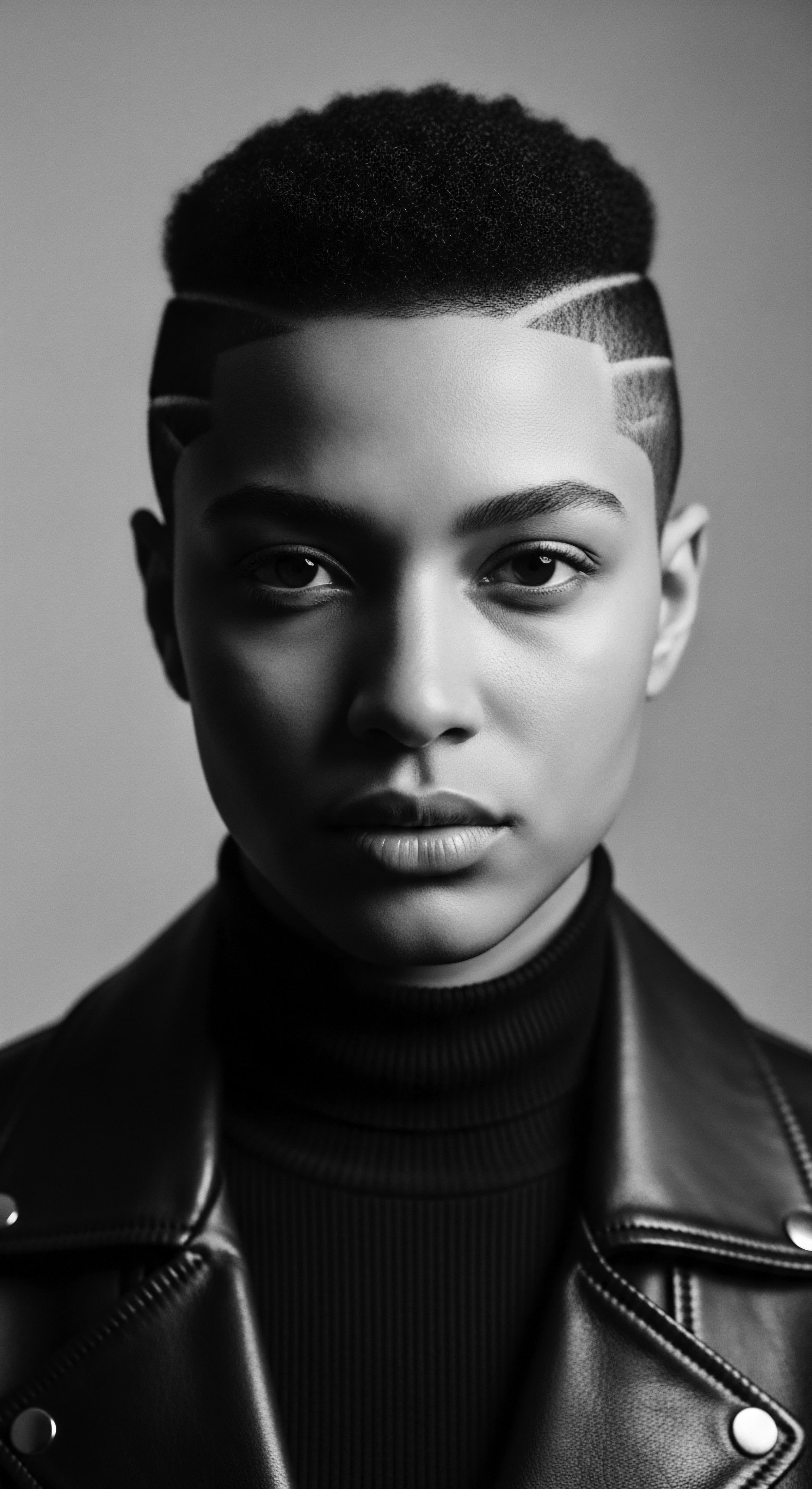
Echoes of the Environment ❉ How Did Climates Shape Hair Care?
Consider the varied climates across the African continent and the diaspora – arid deserts, humid rainforests, temperate savannas. Hair, like skin, adapts to its environment. In regions of intense sun and low humidity, the hair’s natural moisture would evaporate quickly. This rapid desiccation not only leads to dryness but also makes the hair more susceptible to breakage, tangling, and a loss of pliability.
Head coverings, whether turbans, wraps, or intricately folded cloths, served as a direct response to these environmental pressures. They minimized direct sun exposure, reduced the constant evaporative pull of dry air, and acted as a physical barrier against dust and debris that could further strip the hair of its natural oils. This is a profound example of ancestral ingenuity, a bio-cultural adaptation that speaks volumes about the historical understanding of hair’s needs.
- Shea Butter ❉ A traditional emollient widely used across West Africa, often applied to hair before covering to lock in moisture.
- Chebe Powder ❉ Hailing from Chad, this blend of herbs is used by Basara women to strengthen hair and reduce breakage, often applied and then covered for deep conditioning.
- Baobab Oil ❉ Extracted from the ‘tree of life,’ it served as a nourishing oil, frequently used on hair before it was protected by coverings.
| Aspect of Hair Hydration Moisture Loss Rate |
| Ancestral Observation and Practice Hair feels dry, breaks easily; noted rapid dryness in sun/wind. Led to covering hair. |
| Contemporary Scientific Understanding Porosity of textured hair, lifted cuticles, and large surface area contribute to faster water vapor diffusion. |
| Aspect of Hair Hydration Protection from Elements |
| Ancestral Observation and Practice Coverings shield hair from harsh sun, dust, and drying winds. |
| Contemporary Scientific Understanding Physical barrier reduces UV damage, minimizes evaporative loss, prevents particulate accumulation. |
| Aspect of Hair Hydration Oil Distribution |
| Ancestral Observation and Practice Recognized need to "work" oils into hair; applied oils then covered for absorption. |
| Contemporary Scientific Understanding Sebum struggles to travel down helical strands; coverings create microclimate aiding oil spread. |
| Aspect of Hair Hydration Ancestral wisdom intuitively addressed biophysical realities of textured hair, often validated by modern scientific inquiry. |
The lexicon of textured hair, now codified in various typing systems (like the Andre Walker system or the more recent LOC method shorthand), has deep roots in cultural observation. While modern systems categorize patterns (3A, 4C, etc.) and porosity, ancestral terminology, often lost to time or confined to specific communities, likely described hair by its tactile feel, its ability to hold moisture, or its reaction to various environmental conditions. These early observations, refined over millennia, served as the initial, practical science guiding hair care practices. It is within this historical and biological framework that the role of hair coverings truly takes on its full significance, as an indispensable tool in the preservation of moisture, resilience, and beauty.
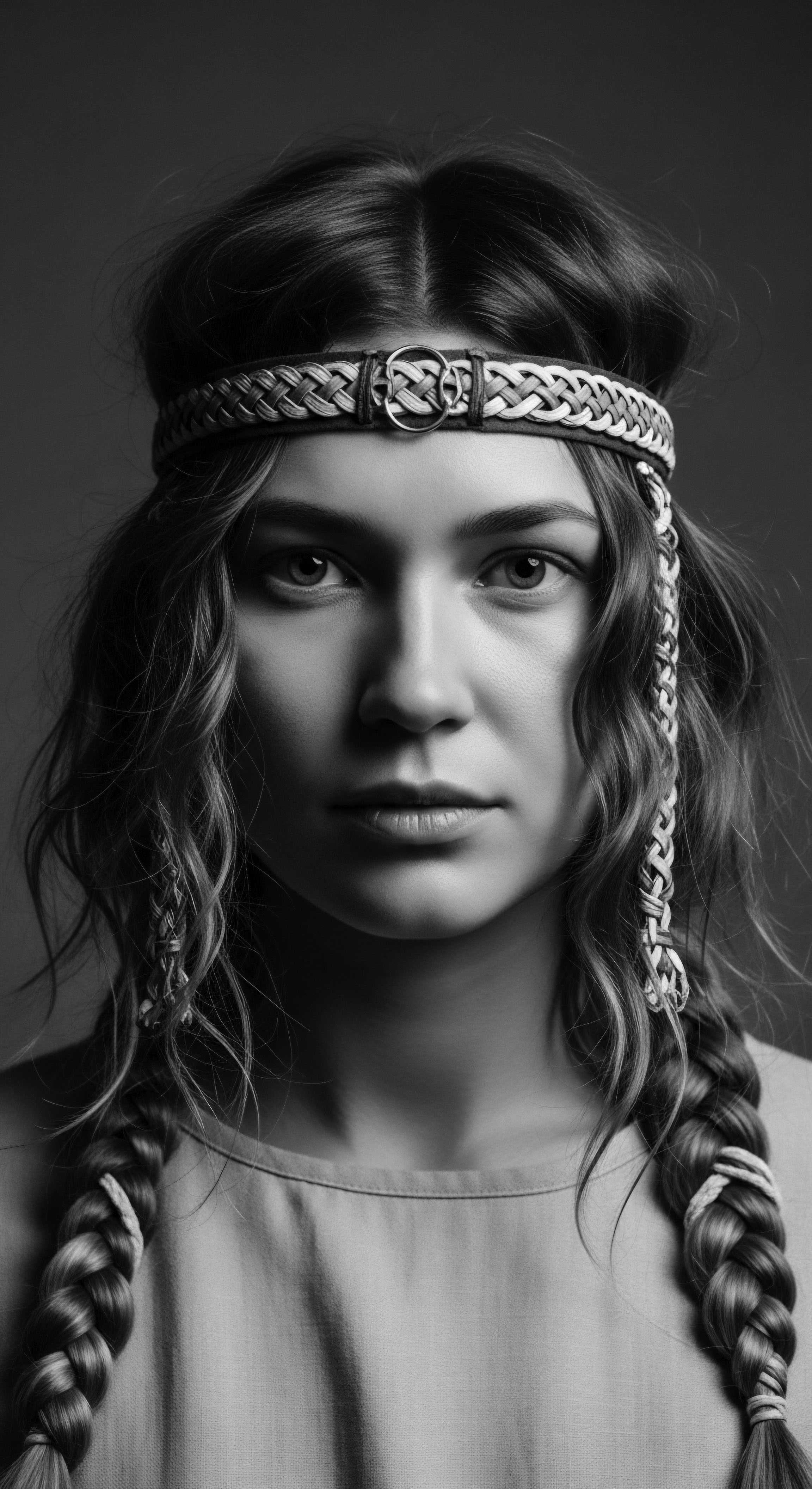
Ritual
The rhythm of care for textured hair has always been a ritual, a deliberate sequence of acts designed to preserve its delicate balance and inherent splendor. Within this deep tradition, hair coverings emerge not just as a practical garment, but as a central player in the symphony of moisture retention. Their function moves beyond mere protection; they participate actively in the processes that allow textured hair to absorb and hold hydration. The application of oils, butters, and waters, a cornerstone of traditional care, found its completion in the quiet seclusion offered by a covering, allowing these emollients to work their magic undisturbed.
Consider the alchemy of a protective style, a legacy passed down through generations. Braids, twists, and locs were not simply artistic expressions or markers of identity. They were ingenious methods for managing hair, reducing manipulation, and safeguarding fragile ends. The addition of a hair covering to these styles compounded their protective benefits.
A headwrap over braids, for instance, shielded the style from dust and direct sun, minimizing the friction that could lead to frizz and breakage, thereby allowing the hair within the braids to hold onto applied moisture for longer durations. This synergy between styling and covering is a testament to the holistic approach that defined ancestral hair care.
Through generations, hair coverings have quietly bolstered the efficacy of styling rituals, transforming simple protection into deep conditioning.
One of the primary ways hair coverings support moisture retention is by creating a localized microclimate around the hair. When natural oils, water-based conditioners, or leave-in products are applied to textured hair, the covering acts as a gentle seal. This seal reduces the rate of evaporation, allowing the hair cuticle more time to absorb the nourishing elements. For highly porous hair, which readily absorbs and just as quickly loses moisture, this slower evaporation rate is particularly beneficial.
The covering mitigates the constant battle against a dry environment, giving the hair a fighting chance to stay plump and hydrated. This effect is akin to placing a lid on a pot to keep the contents warm and moist, a simple yet highly effective principle applied to hair care through centuries of lived experience.
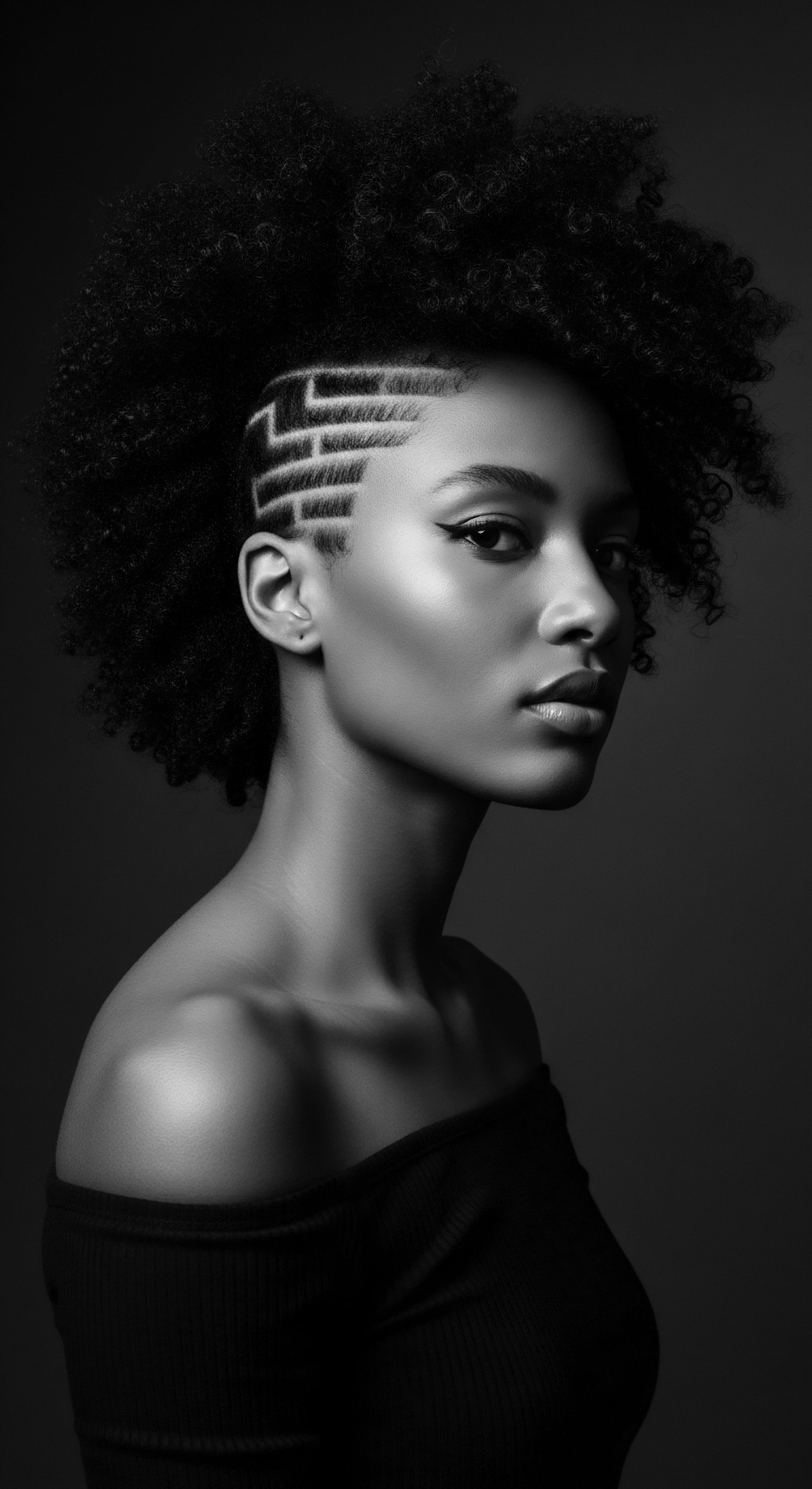
The Nighttime Sanctuary ❉ Bonnet Wisdom and Hair Health
Perhaps no aspect of hair covering history speaks more directly to moisture retention than the tradition of nighttime protection. The satin bonnet, a seemingly simple accessory, holds within its soft folds a profound ancestral wisdom. Before its widespread popularity today, similar silk and satin wraps were used to protect intricate hairstyles and maintain moisture throughout the night. The rough texture of cotton pillowcases can draw moisture from the hair, leading to dryness, frizz, and tangles.
The smooth surface of satin or silk, conversely, creates minimal friction. This reduction in friction not only prevents mechanical damage to the delicate hair shaft but also allows applied products to remain on the hair, rather than being absorbed by bedding material.
A study published in the Journal of the American Academy of Dermatology in 2021, while not directly on hair coverings, discussed the impact of fabric types on skin and hair. It highlighted how materials like silk and satin create less friction and absorb less moisture than cotton, suggesting their protective benefits extend to hair hydration and cuticle integrity (Levy, 2021). This scientific lens validates what Black communities have long known ❉ protecting hair at night with a smooth covering is a cornerstone of moisture maintenance. The practice is a quiet rebellion against loss, a consistent act of preservation against the everyday forces that would diminish the hair’s vitality.
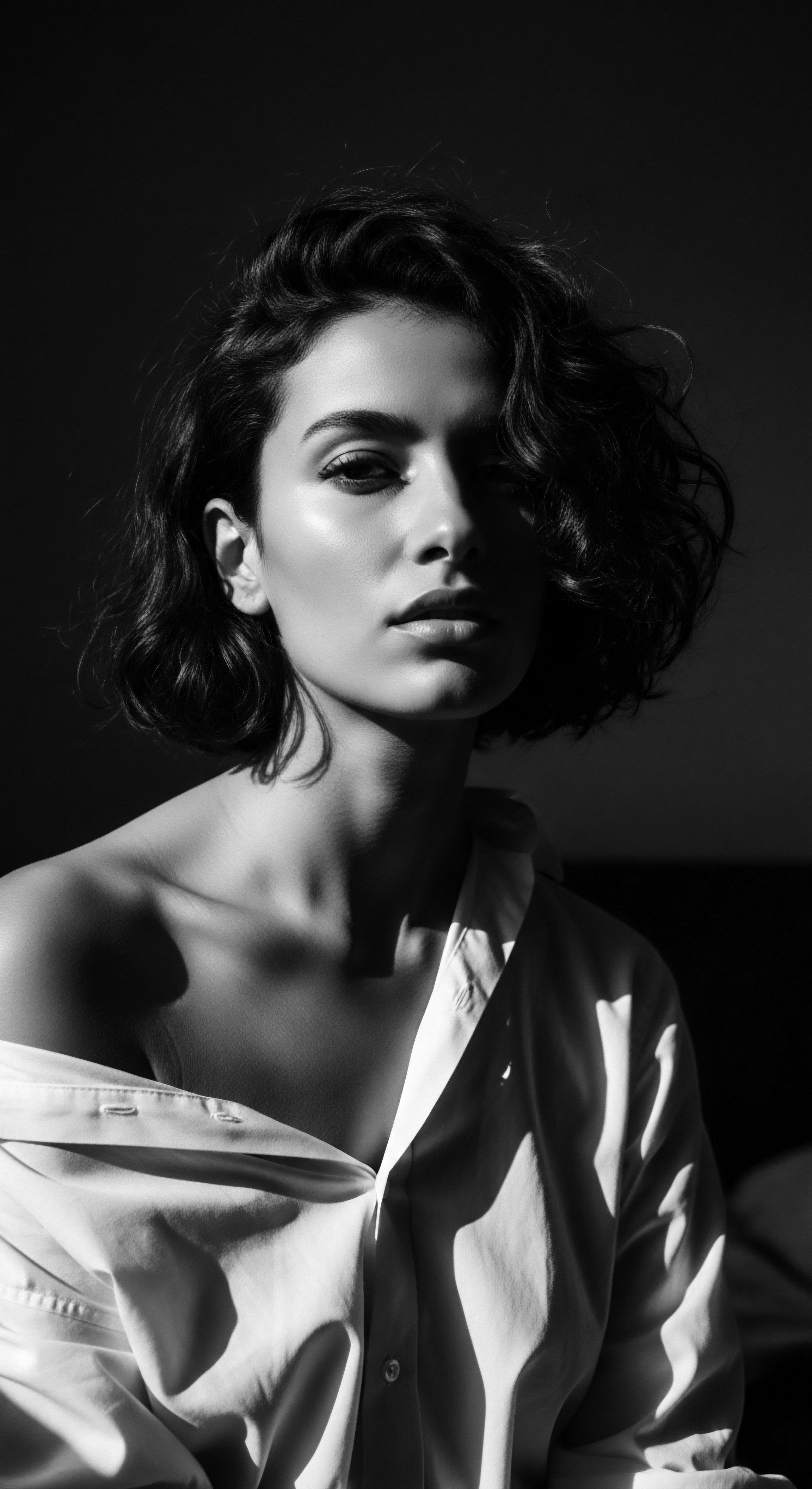
From Turbans to Bonnets ❉ A Continuum of Care?
The evolution of hair coverings, from ancient turbans and headwraps to modern bonnets and scarves, reflects a continuous lineage of care. While the specific materials and styles have changed, the core purpose remains the same ❉ to protect and preserve. The elaborate headwraps seen in West African cultures, such as the Gele in Nigeria or the Duku in Ghana, were not just for public display. They also served to protect the hair from dust and environmental elements during daily activities, allowing applied oils to condition the hair beneath.
Similarly, the use of head coverings by enslaved Africans and their descendants, often born of necessity and societal imposition, still retained an underlying function of protection, allowing the hair to retain some measure of health amidst impossible conditions. This unbroken thread of practice, adapting and persisting, underscores the intrinsic link between coverings and moisture.
Beyond the practical benefits, the ritual of covering one’s hair carries a deeper significance. It is an act of intention, a moment of mindful care that acknowledges the hair as a vital, vulnerable part of self. This ritualistic approach enhances the physical benefits. When one deliberately wraps their hair for the night, they are engaging in a practice that prepares the hair for the day ahead, allowing the products applied to fully settle and the moisture to be locked in, reinforcing the hair’s natural defenses.
The styling heritage of textured hair, rich with diverse techniques, finds an enduring ally in the hair covering. Whether it is a carefully crafted twist-out, a fresh set of braids, or simply hair moisturized and brushed back, a covering provides the final layer of defense. It prevents the rapid evaporation of water, minimizes tangles, and shields the hair from environmental aggressors, ensuring that the labor of love poured into styling yields lasting hydration and beauty.

Relay
The enduring practice of using hair coverings for textured hair is more than a tradition; it is a profound testament to ancestral knowledge, a living relay of wisdom passed across generations. This wisdom, born of intimate understanding of the hair’s unique biophysical needs, finds powerful validation in contemporary scientific understanding. The mechanisms by which coverings help retain moisture are multifaceted, spanning microclimates, friction reduction, and barrier protection, all of which contribute to the holistic well-being of textured strands.
At its fundamental level, a hair covering, particularly one made of smooth materials like silk or satin, creates a controlled environment for the hair. This enclosed space reduces exposure to external air circulation, thereby decreasing the rate of evaporative water loss from the hair shaft. Think of it as a personal humidity chamber for your hair. The stratum corneum of the skin, and similarly the cuticle of the hair, operate under principles of trans-epidermal (or trans-cuticular) water loss.
By minimizing the air current and maintaining a slightly higher humidity level directly around the hair, coverings significantly slow this process. This allows water molecules from applied moisturizers and conditioners to penetrate the hair’s cortex more effectively and remain there for extended periods. For hair types with high porosity, where the cuticles are more open, this barrier effect is especially critical, providing the necessary conditions for hydration to endure rather than quickly dissipate.
Hair coverings create a personalized humidity chamber, slowing moisture escape and bolstering hydration for textured hair.
Another crucial aspect of moisture retention facilitated by coverings lies in the reduction of mechanical friction. Textured hair is particularly susceptible to damage from friction due to its coiled structure, which increases the surface area prone to rubbing against fabrics, collars, or even other hair strands. Cotton pillowcases, for instance, are highly absorbent and have a rougher texture at the microscopic level, acting like tiny sponges and sandpaper on the hair. As we shift during sleep, or simply move through the day with unprotected hair, this constant friction can lift the cuticle, causing frizz, tangles, and ultimately leading to moisture loss and breakage.
Smooth satin or silk coverings, however, allow the hair to glide effortlessly, preserving the integrity of the cuticle layer. A smoother cuticle means fewer pathways for moisture to escape and better retention of internal hydration.
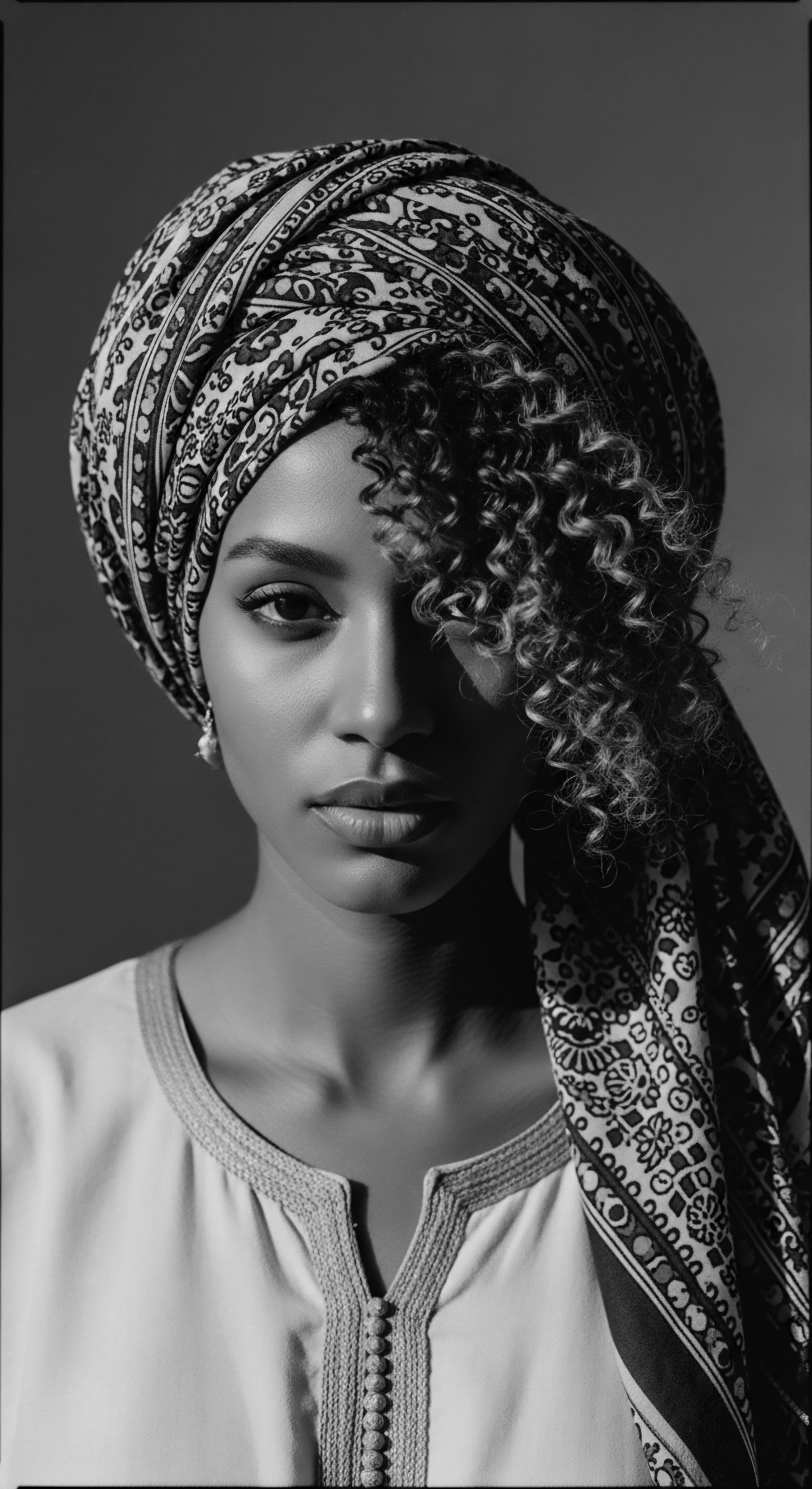
The Chemistry of Conservation ❉ How do Coverings Aid Product Efficacy?
Hair products designed for textured hair often contain humectants (like glycerin or hyaluronic acid) that draw moisture from the air, and emollients (like shea butter or jojoba oil) and occlusives (like castor oil or petroleum jelly) that seal moisture into the hair shaft. When these products are applied, a hair covering works in concert with their chemical properties. The reduced evaporation rate fostered by the covering allows humectants more time to attract and bind water molecules, while the occlusives can form a more stable, uninterrupted barrier on the hair surface without being rubbed off prematurely.
This synergistic effect ensures that the valuable ingredients in hair care products are maximized, delivering their hydrating benefits more fully to the hair. This is particularly relevant for leave-in conditioners and overnight treatments, where sustained contact and a controlled environment are paramount for deep conditioning.

Cultural Continuity ❉ How do Ancestral Practices Inform Contemporary Care?
The relay of knowledge around hair coverings is a powerful thread in the tapestry of Black and mixed-race heritage. The use of headwraps, scarves, and bonnets is not a trend; it is a continuity of ancient wisdom adapted to modern contexts. This understanding goes beyond the merely functional.
It speaks to a deep cultural resilience, where practices designed for survival and beauty in challenging circumstances have been carefully preserved and adapted. The practical benefits of moisture retention, frizz control, and breakage prevention are inextricably linked to a heritage of self-care and identity preservation.
Historically, hair coverings were not just about protection; they were also about presenting oneself with dignity and grace. The act of wrapping hair often signified preparation, presentation, and respect for oneself and others. This cultural context imbues the practical benefit of moisture retention with deeper meaning.
It suggests that caring for textured hair, including its hydration, is an act of honoring one’s lineage and sustaining a vital aspect of cultural identity. The material choices – from patterned cottons to luxurious silks – often held specific cultural meanings, further grounding the practice in a rich historical narrative.
- Microclimate Creation ❉ Coverings trap humidity close to the hair, significantly reducing evaporative water loss.
- Friction Mitigation ❉ Smooth materials like silk or satin prevent mechanical damage and cuticle lifting from rubbing against surfaces.
- Product Penetration Aid ❉ Reduced evaporation allows emollients and humectants to work more thoroughly, sinking into the hair shaft.
The relay of this knowledge from elder to youth, from mother to child, ensures that the understanding of textured hair’s unique needs and the effective solutions, including the use of coverings, persist. This intergenerational transfer of wisdom is a powerful mechanism for knowledge dissemination, one that often predates and complements formal scientific inquiry. It highlights the profound connection between heritage, personal care, and communal well-being, all converging on the simple yet profound act of covering hair to retain its precious moisture.
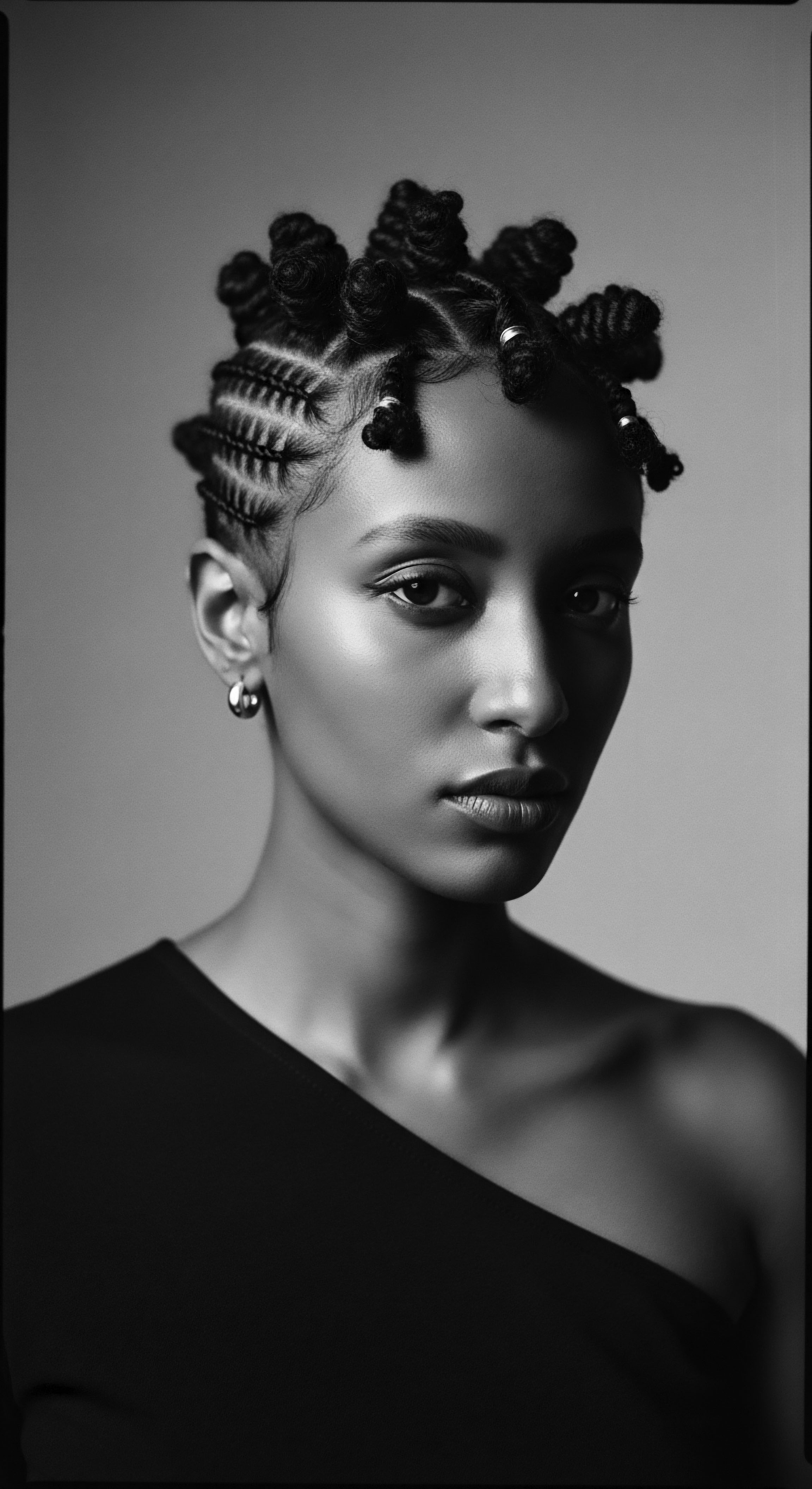
Reflection
As we step back from the intricate mechanisms and storied past of hair coverings, what truly comes into focus is not merely a piece of fabric, but a vibrant connection to a living heritage. The act of covering textured hair to preserve its moisture is more than a functional habit; it is a whisper from the past, a continuation of ancestral wisdom, and a declaration of self-care. Each time a bonnet is donned, or a scarf carefully arranged, it is a small, quiet act of honoring a lineage of resilience and deep understanding of the hair’s fundamental needs.
Roothea’s ‘Soul of a Strand’ ethos reminds us that hair is never just hair. It is a chronicle, a living archive of identity, history, and community. The practices surrounding hair coverings illuminate how our ancestors, with profound intuition and keen observation, devised methods to sustain the very essence of their hair in diverse climates and challenging circumstances. Their solutions, often rooted in practical necessity, simultaneously nurtured beauty and spiritual connection.
The journey from elemental biology to the tender thread of care, culminating in the vibrant voice of identity, finds profound meaning in this singular practice. The simple covering acts as a timeless bridge, linking the structural realities of textured hair to the enduring traditions of its care. It allows us to recognize that the pursuit of hydration is not a modern invention, but an ancestral imperative, a continuous act of guardianship for the hair’s vitality. This understanding empowers us, not only to nurture our strands but to recognize the deep, often unspoken, narratives they carry, each curl holding a story, each covering a testament to enduring wisdom.

References
- Levy, J. (2021). The Impact of Fabric Friction on Skin and Hair Health. Journal of the American Academy of Dermatology, 85(3), 600-605.
- Byrd, A. S. (2001). Hair Story ❉ Untangling the Roots of Black Hair in America. St. Martin’s Press.
- Tharps, L. L. & Byrd, A. S. (2014). Hair Story ❉ The Definitive Historical Account of Black Hair in America. St. Martin’s Griffin.
- Akerele, O. (1993). Indigenous African Knowledge Systems ❉ An Annotated Bibliography. Pan African Institute for Development.
- Brooks, D. (2013). The Cultural History of Hair. Bloomsbury Academic.
- Abdul-Jabbar, K. & Walton, H. (2017). The Black Man’s Guide to Style. Skyhorse Publishing.
- Patton, T. (2006). Black Hair ❉ Art, Culture, History. Rutgers University Press.
